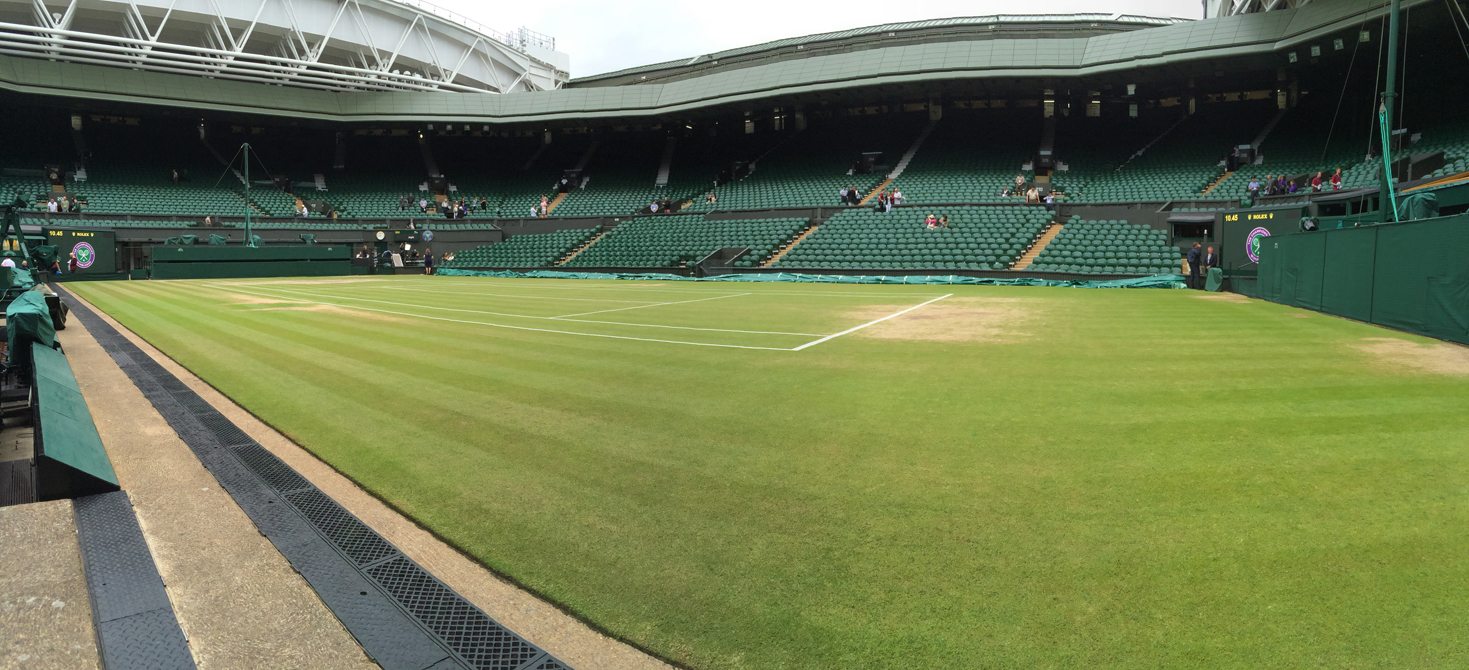Novak Djokovic makes you play bad.
When we look at Novak Djokovic, we marvel at his ridiculous elasticity, the strength of his backhand, the deep returns, and the clutch serving.
When we look at Djokovic, we see the prototype of the modern player. He is the best of the best, and has been for some time.
But in order to fully appreciate Nole, the best place to understand him is not at him at all – it’s actually better to look at the guy standing on the other side of the net, and see him performing poorly.
Djokovic plays great, and he also makes you play bad.
A simple, clear illustration of just how good Djokovic is at making you play your “B Game”, or even a “C Game,” is what he has done to Roger Federer in the past two Wimbledon finals. Roger looked like a Greek god sailing into the 2014 and 2015 Wimbledon finals, but performed significantly worse in key areas, to lose both times to the super Serb.
Check out the following table to understand how Djokovic brings a wrecking ball to Federer’s game.
| Roger Federer | 2015 1st 6 Matches | 2015 Final v Djokovic | 2014 Final v Djokovic |
|---|---|---|---|
| 1st Serve Points Won | 85% | 74% | 77% |
| 2nd Serve Points Won | 65% | 49% | 44% |
| Baseline Points Won | 54% | 40% | 40% |
| Unreturned Serves | 42% | 32% | 36% |
| 0-4 Shot Rallies | 59% | 49% | - |
| 5-8 Shot Rallies | 55% | 56% | - |
| 9+ Shot Rallies | 57% | 36% | - |
1st Serve Points Won
Roger was winning 85% of his first serve points going into the 2015 final, which is absurdly high. Djokovic is such a great returner, and he knocked about 10 percentage points off that total in the final, but it still basically remained a strength for the Swiss star. It’s very, very difficult to turn an opponent’s first serve into a weakness – but if anyone can do it, it’s Djokovic.
2nd Serve Points Won
This is such a monster stat that is always a great indicator as to who is controlling the match, and who will win. Second serve points was a strength for Federer this year, winning 65% in his first six matches, but that got pushed down to 49% in the final, and a lowly 44% in the 2014 final. If you lose more 2nd serve points than you win, you are going to have a very difficult time winning a match – no matter what else is happening around it.
Baseline Points Won
This is where Novak really removes Roger’s strengths. I was impressed with how well Roger was playing from the baseline leading into the final (particularly backhands), but Novak is simply better in this area. For Roger to only win 40% of baseline points in this year’s final, and also last year’s final, provides Nole such a huge advantage, and a regular place to keep winning points throughout the match.
Unreturned Serves
Roger enjoyed 42% of his serves not coming back in the run to this year’s final, but that was crushed down to 32% by the world’s best returner. Novak makes so many returns, making Federer have to hit an extra ball all the time – giving him one more opportunity to miss.
Rally Length
You have got to dominate rallies of 0-4 shots, simply because it’s the biggest pool of points by far. Djokovic wrecked havoc in this area for Federer, knocking him down from winning 59% in the run to the final, down to 49% in the 2015 final. Roger did well in the 5-8 shot area, but once the point extends to nine shots or more, Novak really took over, with Roger only winning 36% (57% to the final) of the points.
Summary
There are a lot of different ways to win a Wimbledon final, and a key ingredient for Djokovic is to take away the opponent’s strengths, and turn then into a weakness. Djokovic does not get enough credit for making an opponent play worse than they normally would, but that is clearly the case in the past two Wimbledon finals.
It’s not always about you, and your side of the net. It’s a lot easier to defeat an opponent when they are not firing on all cylinders.
Cheers!
Craig

